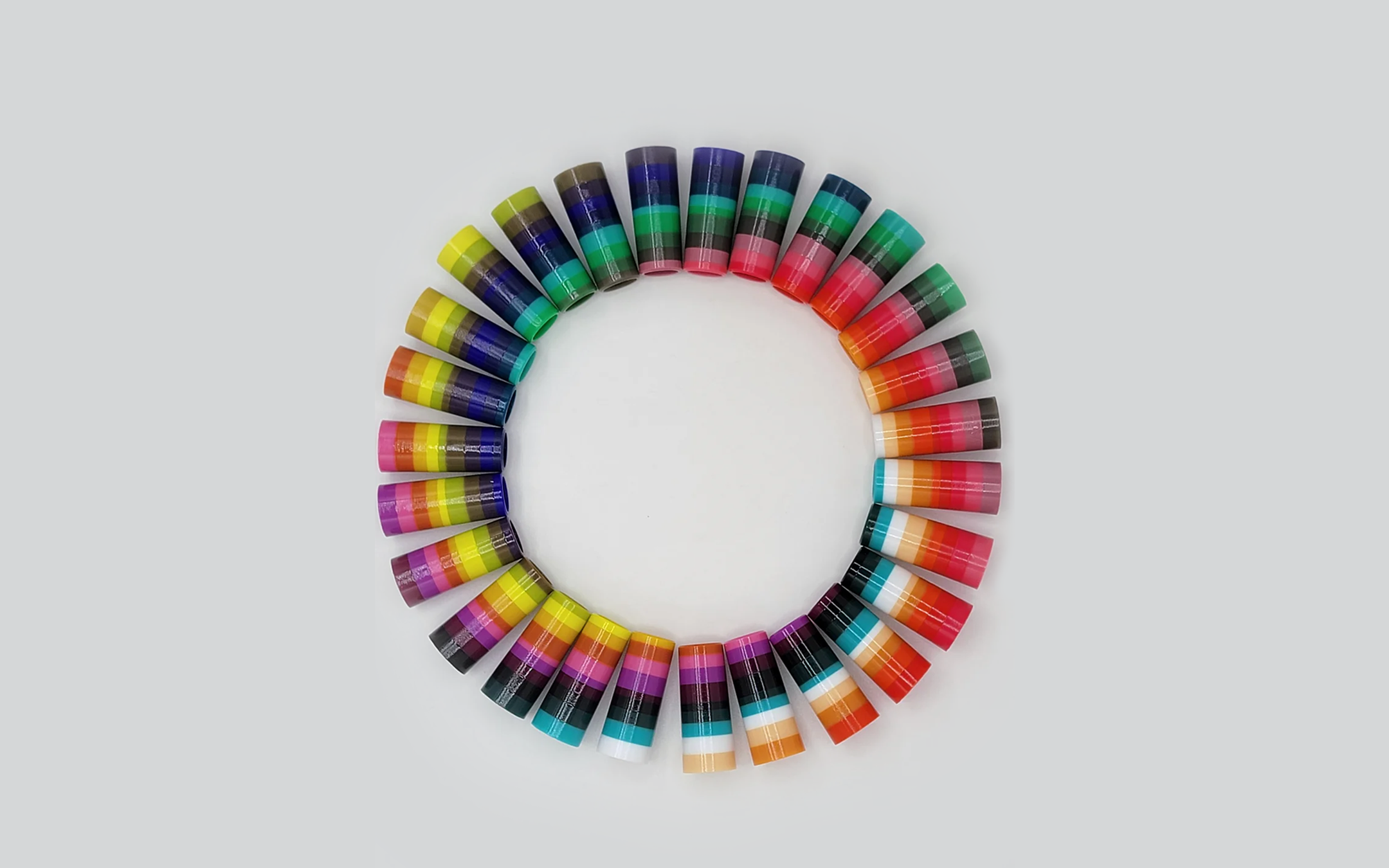
The ferrule. Once bland, black, and forgettable. The invisible collar between the shaft and the clubhead, engineered to disappear. A perfect emblem of a game so consumed by tradition it forgot how to look forward. Then along came Patrick Boyd. He took the most overlooked piece of a golf club and turned it into a small but defiant act of self‑expression. In doing so, he helped spark a cultural shift, becoming an unlikely catalyst in golf’s return to something more alive, more personal, and more interesting.
Boyd didn’t set out to change golf. He was a gear‑obsessed tinkerer with an eye for forgotten details, the kind of person who could stand in a dusty shop staring at a set of old Wilson blades and see beauty where the rest of us saw nothing. That spark became The Boyd Blade & Ferrule Company, a one‑man operation transforming golf’s most ignorable part into something impossible to overlook.
His ferrules look like they spilled from a candy jar, bursting with stripes and combinations that feel lifted from vintage surfboards, old sneakers, or a favorite childhood toy. They are nostalgic and loud, defiantly playful in a sport that often prefers its edges sanded smooth. Suddenly, the ferrule was no longer just a spacer. It was an exclamation point, a conversation starter, a quiet rebellion at the end of a hosel.
This was not the product of corporate R&D or a marketing brainstorm in some glass‑walled conference room. This was one man in a workshop chasing an idea until it stopped feeling like an idea and started feeling inevitable. He experimented with plastics, refined dimensions, and ensured his ferrules were not only beautiful but also durable enough to survive the grind of real club building. When they were ready, he didn’t launch with a press release or a marketing team. He simply began posting photos on Instagram — colorful little cylinders lined up in rows, like a chef sliding plates across a counter to see who was hungry.
People bit. Hard.

A cult following formed. Not the kind built by ad campaigns or tour‑truck endorsements, but from the underground. Hobbyists. Boutique builders. Gearheads who love golf the way some people love vinyl records. They didn’t just buy his ferrules. They hunted them, traded them, and waited for the next drop like sneakerheads chasing grails. In a sport where personal expression usually ends at the logo on your cap, Boyd gave golfers a new language for their clubs.
Patrick’s secret weapon wasn’t advertising. It was his customers, a stealth marketing army who posted their custom builds with pride, tagging his company and spreading the gospel of BB&F. It was the kind of word‑of‑mouth buzz that corporate giants burn millions trying to manufacture. And it didn’t stay on Instagram. Custom club‑building hobbyists became full‑time builders and then business owners.
Take Javier Camarillo, better known as SuperSwings. Javier, who brings color to golf clubs in ways I've never seen, began in his garage only a few years ago. In no time, he amassed tens of thousands of followers on Instagram and recently opened SuperSwings ProShop in San Diego, realizing his brick‑and‑mortar vision. It has already become a hub for the new breed of golfer, a place where customization meets community. It’s a vision that likely would not have happened without the BB&F revolution.

Javier Camarillo aka SuperSwings
SuperSwings Build.
And Javier is not alone. Across the country, small builders and boutique fitters have followed similar paths. Some have transformed side hustles into thriving businesses, while others collaborate with established brands, infusing an industry that once prided itself on uniformity with fresh color and personality. Even beyond ferrules, new companies like RipIt Grips are leaning into this frontier of color and design, creating bold, custom grip options that pair perfectly with Boyd’s creations. No1 Grips also collaborated with BB&F to bring complete ferrule and grip combinations to the golf world. Together, these innovators are pushing golf gear into uncharted territory, turning clubs into canvases for personal expression.
But this was never just about plastic rings. It has always been about craft. Boyd still believes in doing things the hard way because that is the only way they are worth doing. He cut his teeth in the boutique club world, building sticks for players who cared about every groove and grind. His ferrules carry that same DNA: small, precise, perfectly imperfect in the way only handmade things can be.
Call it decoration if you want, but you would be missing the point. Boyd’s work is a reminder that golf doesn’t have to be so buttoned‑up and bloodless. That even the smallest details can carry a story, a personality, and a little joy.
Patrick Boyd took the least important piece of a golf club and made it matter. That’s no small thing. It is a middle finger to the sterile, a love letter to the overlooked, and a reminder that this game, our game, should still feel alive. He didn’t just change ferrules. He changed how we look at them, and maybe, in some small way, how we look at the game itself.


